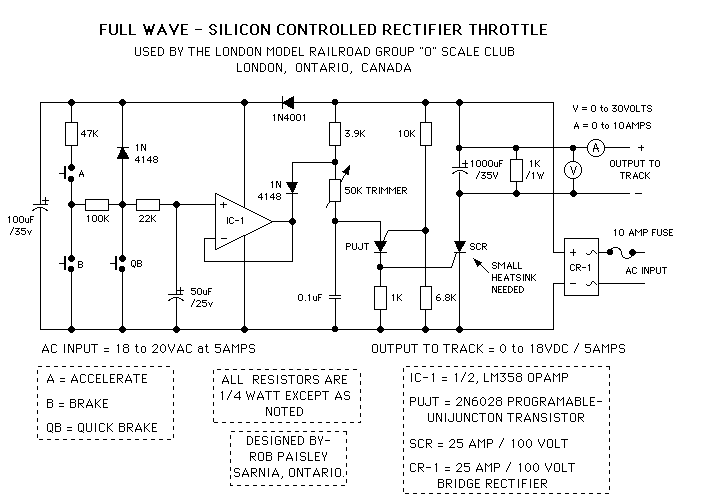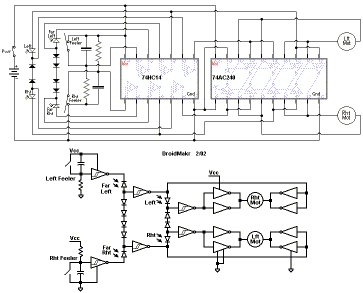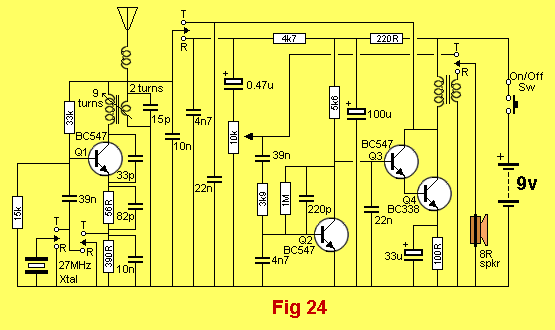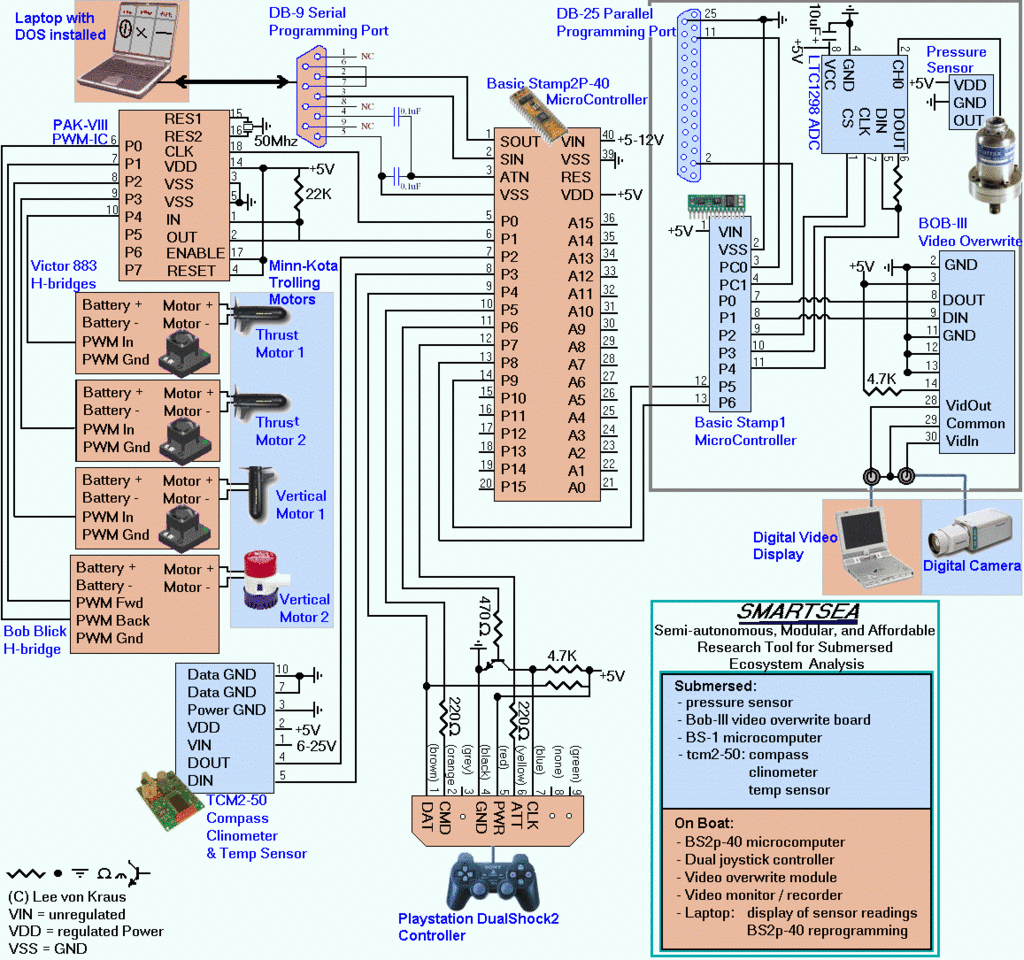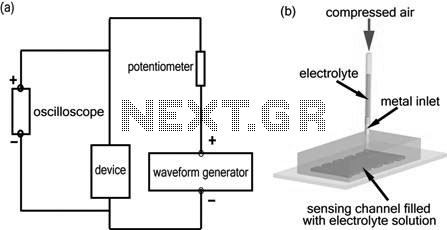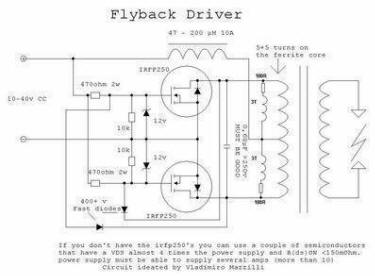
Berkeley Bolometer Group - Research
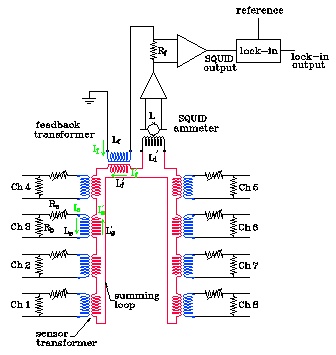
Bolometer systems would be significantly simplified if all components could be fabricated photolithographically on a single substrate. A design is being developed for a single-substrate array that incorporates several frequency bands with a planar antenna for coupling to the telescope, transmission-line filters for separating and defining frequency bands, and lithographed bolometers.
Bolometer arrays are typically coupled to telescopes either through horns or by positioning the absorbers directly in the focal plane. An alternative method involves the use of planar antennas. These antennas control the solid angle visible to the bolometer similar to a horn but are easier to fabricate in large arrays. The current design utilizes a double-slot dipole antenna, which possesses favorable characteristics for bolometer arrays, including a symmetric beam pattern and an impedance suitable for matching to a microstrip transmission line. A dielectric lens is usually placed in direct contact with the antenna, and this combination can be optimized to match the f/# of a telescope by adjusting the lens parameters. A dual-polarization version of the double-slot dipole has been developed.
A planar antenna couples radiation from the telescope to a transmission line, such as microstrip. Transmission-line elements can separate the RF energy into multiple well-defined frequency bands, with considerable literature available on such devices from the electrical engineering domain. Superconducting Nb microstrip resonant stub filters are under investigation, where the stubs are lambda in length and modeled as LC resonators. These filters can achieve near-unity in-band transmission due to the low microwave loss of the superconductor.
Two types of lithographed VSBs are being developed: a suspended device that achieves thermal isolation using long, thin legs of silicon nitride, and a "hot-electron" device where isolation is due to weak electron-phonon interaction in a small-volume metal sensor. Both types can be coupled to a planar transmission line such as microstrip. The suspended device can be connected via transmission lines on the bolometer legs, terminated in a lithographed resistor adjacent to the sensor. The hot-electron device can act as a resistive load at frequencies above those corresponding to twice the gap energy of the superconductor, with an appropriate impedance transformer used to match the typically low normal resistance of the sensor. Suitable suspended devices have been built and tested, exhibiting thermal-fluctuation limited white noise and 1/f knees of several hundred mHz. The hot-electron VSBs are simpler to fabricate and are currently being explored using an Al/Ti proximity-effect sandwich superconductor.
Readout SQUIDs or multiplexed readout SQUIDs could eventually be integrated onto the same substrate as the antennas, RF multiplexer, and bolometers. The low RF loss of niobium microstrip, approximately 1% per wavelength of line, allows RF energy to be routed outside the telescope's field-of-view, providing space for the RF multiplexer, readout SQUIDs, and multiplexers. A prototype absorber-coupled VSB has been developed, which is suitable for constructing a nearly filled array on a single substrate. This type of array is positioned at the focal plane of a telescope and directly absorbs the incident radiation, similar to existing designs, although there have been instances of defects due to dust contamination. The materials used for the bolometer include Ti/Al/Ti.Bolometer systems would be simplified considerably if all components could be made photolithographically on a single substrate. We are developing a design for a single-substrate array with several frequency bands that incorporates a planar antenna for coupling to the telescope, transmission-line filters for separating and defining frequency bands,
and lithographed bolometers. Antenna Coupling: Bolometer arrays are usually coupled to telescopes either by horns or by placing the absorbers directly in the focal plane. Another possible method is to use planar antennas. Planar antennas control the solid angle that is visible to the bolometer as with a horn, but are much easier to fabricate in large arrays.
Our current design uses a double-slot dipole [filipovic97]. This antenna has many good features for use in bolometer arrays. It has a symmetric beam pattern and an impedance suitable for matching to microstrip transmission line. A dielectric lens in direct contact with the antenna is typically used, and the combination antenna/lens can be matched to the f/# of a telescope by adjusting the parameters of the lens.
A dual polarization version of the double-slot dipole has been developed by Chattopadhyay and Zmuidzinas [chattopadhyay98]. Transmission-line Filters and RF Multiplexers: A planar antenna couples radiation from the telescope to a transmission line, for example, microstrip.
Transmission-line elements can be used to separate the RF energy into multiple well defined frequency bands. There is a considerable literature on such devices from the electrical engineering community. We are investigating superconducting Nb microstrip resonant stub filters. The stubs are lambda in length and can be modeled as ``LC`` resonators. The in-band transmission of such filters can approach unity due to the low microwave loss of the superconductor.
Lithographed VSBs: We are developing two types of VSB, a suspended device where the thermal isolation is achieved by using long thin legs of silicon nitride and a ``hot-electron`` device where the isolation occurs due to the weak electron-phonon interaction in a small-volume metal sensor. Both types can be coupled to a planar transmission line such as microstrip. The suspended device can be coupled via transmission lines on the legs of the bolometer terminated in a lithographed resistor adjacent to the sensor.
The hot-electron device can act as a resistive load at frequencies above those corresponding to twice the gap energy of the superconductor. An appropriate impedance transformer can be used to match to the typically low normal resistance of the sensor.
We have built and tested suitable suspended devices with thermal-fluctuation limited white noise and 1/f knees of several hundred mHz [gildemeister00b]. The hot-electron VSBs would be more simple to fabricate, and we are currently exploring devices using an Al/Ti proximity-effect sandwich superconductor.
SQUID readout: Readout SQUIDs or multiplexed readout SQUIDs could eventually be integrated onto the same substrate as the antennas, RF multiplexer, and bolometers. The low RF loss of niobium microstrip, roughly 1% per wavelength of line, allows the RF energy to be taken outside the field-of-view of the telescope where there is room for the RF multiplexer, readout SQUIDs, and readout multiplexers.
We have developed a prototype absorber-coupled VSB, shown below, that is suitable for building a nearly filled array on a single substrate. This type of array is placed at the focal plane of a telescope and directly absorbs the incident radiation as with the GSFC pop-up [benford98] or the CEA [agnese99] designs, but our design may be although several had defects due to dust contamination.
made from an Ti/Al/Ti he bolometer materials. 🔗 External reference
Bolometer arrays are typically coupled to telescopes either through horns or by positioning the absorbers directly in the focal plane. An alternative method involves the use of planar antennas. These antennas control the solid angle visible to the bolometer similar to a horn but are easier to fabricate in large arrays. The current design utilizes a double-slot dipole antenna, which possesses favorable characteristics for bolometer arrays, including a symmetric beam pattern and an impedance suitable for matching to a microstrip transmission line. A dielectric lens is usually placed in direct contact with the antenna, and this combination can be optimized to match the f/# of a telescope by adjusting the lens parameters. A dual-polarization version of the double-slot dipole has been developed.
A planar antenna couples radiation from the telescope to a transmission line, such as microstrip. Transmission-line elements can separate the RF energy into multiple well-defined frequency bands, with considerable literature available on such devices from the electrical engineering domain. Superconducting Nb microstrip resonant stub filters are under investigation, where the stubs are lambda in length and modeled as LC resonators. These filters can achieve near-unity in-band transmission due to the low microwave loss of the superconductor.
Two types of lithographed VSBs are being developed: a suspended device that achieves thermal isolation using long, thin legs of silicon nitride, and a "hot-electron" device where isolation is due to weak electron-phonon interaction in a small-volume metal sensor. Both types can be coupled to a planar transmission line such as microstrip. The suspended device can be connected via transmission lines on the bolometer legs, terminated in a lithographed resistor adjacent to the sensor. The hot-electron device can act as a resistive load at frequencies above those corresponding to twice the gap energy of the superconductor, with an appropriate impedance transformer used to match the typically low normal resistance of the sensor. Suitable suspended devices have been built and tested, exhibiting thermal-fluctuation limited white noise and 1/f knees of several hundred mHz. The hot-electron VSBs are simpler to fabricate and are currently being explored using an Al/Ti proximity-effect sandwich superconductor.
Readout SQUIDs or multiplexed readout SQUIDs could eventually be integrated onto the same substrate as the antennas, RF multiplexer, and bolometers. The low RF loss of niobium microstrip, approximately 1% per wavelength of line, allows RF energy to be routed outside the telescope's field-of-view, providing space for the RF multiplexer, readout SQUIDs, and multiplexers. A prototype absorber-coupled VSB has been developed, which is suitable for constructing a nearly filled array on a single substrate. This type of array is positioned at the focal plane of a telescope and directly absorbs the incident radiation, similar to existing designs, although there have been instances of defects due to dust contamination. The materials used for the bolometer include Ti/Al/Ti.Bolometer systems would be simplified considerably if all components could be made photolithographically on a single substrate. We are developing a design for a single-substrate array with several frequency bands that incorporates a planar antenna for coupling to the telescope, transmission-line filters for separating and defining frequency bands,
and lithographed bolometers. Antenna Coupling: Bolometer arrays are usually coupled to telescopes either by horns or by placing the absorbers directly in the focal plane. Another possible method is to use planar antennas. Planar antennas control the solid angle that is visible to the bolometer as with a horn, but are much easier to fabricate in large arrays.
Our current design uses a double-slot dipole [filipovic97]. This antenna has many good features for use in bolometer arrays. It has a symmetric beam pattern and an impedance suitable for matching to microstrip transmission line. A dielectric lens in direct contact with the antenna is typically used, and the combination antenna/lens can be matched to the f/# of a telescope by adjusting the parameters of the lens.
A dual polarization version of the double-slot dipole has been developed by Chattopadhyay and Zmuidzinas [chattopadhyay98]. Transmission-line Filters and RF Multiplexers: A planar antenna couples radiation from the telescope to a transmission line, for example, microstrip.
Transmission-line elements can be used to separate the RF energy into multiple well defined frequency bands. There is a considerable literature on such devices from the electrical engineering community. We are investigating superconducting Nb microstrip resonant stub filters. The stubs are lambda in length and can be modeled as ``LC`` resonators. The in-band transmission of such filters can approach unity due to the low microwave loss of the superconductor.
Lithographed VSBs: We are developing two types of VSB, a suspended device where the thermal isolation is achieved by using long thin legs of silicon nitride and a ``hot-electron`` device where the isolation occurs due to the weak electron-phonon interaction in a small-volume metal sensor. Both types can be coupled to a planar transmission line such as microstrip. The suspended device can be coupled via transmission lines on the legs of the bolometer terminated in a lithographed resistor adjacent to the sensor.
The hot-electron device can act as a resistive load at frequencies above those corresponding to twice the gap energy of the superconductor. An appropriate impedance transformer can be used to match to the typically low normal resistance of the sensor.
We have built and tested suitable suspended devices with thermal-fluctuation limited white noise and 1/f knees of several hundred mHz [gildemeister00b]. The hot-electron VSBs would be more simple to fabricate, and we are currently exploring devices using an Al/Ti proximity-effect sandwich superconductor.
SQUID readout: Readout SQUIDs or multiplexed readout SQUIDs could eventually be integrated onto the same substrate as the antennas, RF multiplexer, and bolometers. The low RF loss of niobium microstrip, roughly 1% per wavelength of line, allows the RF energy to be taken outside the field-of-view of the telescope where there is room for the RF multiplexer, readout SQUIDs, and readout multiplexers.
We have developed a prototype absorber-coupled VSB, shown below, that is suitable for building a nearly filled array on a single substrate. This type of array is placed at the focal plane of a telescope and directly absorbs the incident radiation as with the GSFC pop-up [benford98] or the CEA [agnese99] designs, but our design may be although several had defects due to dust contamination.
made from an Ti/Al/Ti he bolometer materials. 🔗 External reference
